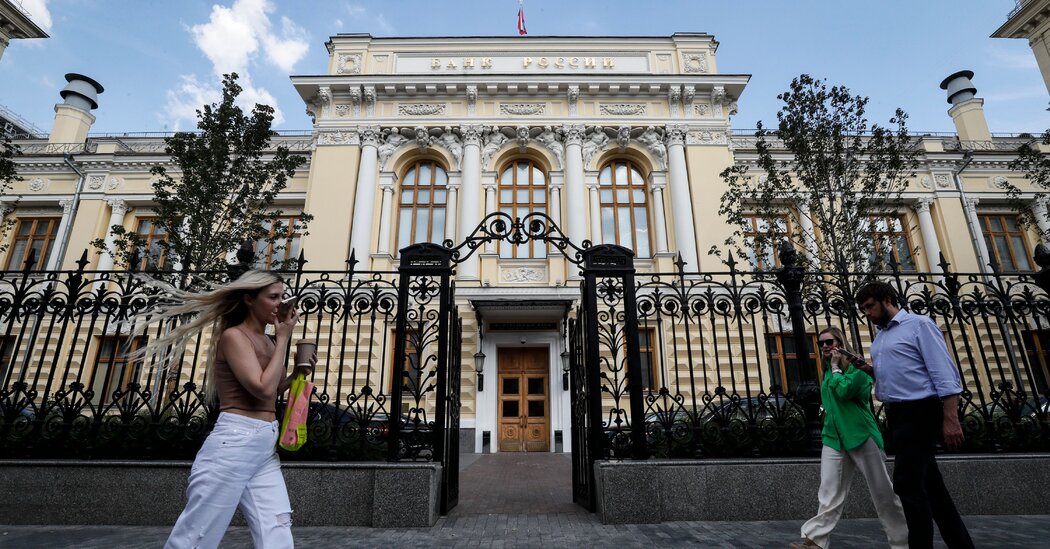Nursing Home Staffing Shortages and Other Problems Still Persist
Many Americans prefer to believe the Covid pandemic is a thing of the past. But for the nation’s nursing homes, the effects have yet to fully fade, with staffing shortages and employee burnout still at crisis levels and many facilities struggling to stay afloat, according to a new report published Thursday by federal investigators.
The report, by the inspector general’s office at the U.S. Department of Health and Human Services, found that the flawed infection-control procedures that contributed to the 170,000 deaths at nursing homes during the pandemic were still inadequate at many facilities. And while the uptake of Covid vaccines was initially robust when they first became available, investigators found that vaccination booster rates among staff workers and residents have been badly lagging.
The findings were directed at the Centers for Medicare & Medicaid Services, the agency under the department’s jurisdiction that oversees 1.2 million nursing home residents whose care is provided mainly by the federal government. The inspector general’s report described the staffing problems as “monumental,” noting high levels of burnout, frequent employee turnover and the burdens of constantly training new employees, some of whom fail to show up for their first day of work. For nursing homes, the inability to attract and retain certified nurse aides, dietary services staff and housekeeping workers is tied to federal and state reimbursements that do not cover the full cost of care.
Rachel Bryan, a social science analyst with the inspector general’s office, said the report sought to ensure that key lessons from the pandemic were not lost, especially now that the acute sense of urgency has faded.
“Just as airplanes cannot be repaired while in flight, nursing home challenges could not be fully repaired during the pandemic,” she said. “We feel very strongly that as we come out of emergency mode, we take the time to reflect, learn and take real steps toward meaningful change.”
The Centers for Medicare & Medicaid Services declined to discuss the recommendations, and instead directed a reporter to comments the agency provided for the report. Those comments were largely noncommittal, neither agreeing or disagreeing with the recommendations, but agency officials asked that some of the proposed recommendations be removed from the report, saying improvements were already in the works.
The agency, for example, cited a new federal program that will provide $75 million in scholarships and tuition reimbursement for those pursuing careers in nursing.
The report, based on interviews with two dozen nursing home administrators from across the country, paints a picture of an industry in deep turmoil. Many nursing homes are still reeling from the traumas wrought by the pandemic, when shortages of personal protective equipment and widespread fear of infection drove away seasoned employees and forced nursing home operators to bar outside visitors, compounding the fear and isolation of their residents.
At the pandemic’s peak in 2020, two in five Medicare beneficiaries in nursing homes were infected with Covid and more than 1,300 nursing homes had infection rates of 75 percent or higher during surge periods, according to a previous report by the inspector general. In April 2020, for example, there were 1,000 additional deaths per day among Medicare nursing home beneficiaries than in April 2019. Death rates were higher at for-profit nursing homes, investigators found.
At Bethany Home, a nonprofit nursing facility in Lindsborg, Kan., a third of employees quit during the pandemic, many of them driven by their opposition to vaccine mandates or by the nationwide shortage of P.P.E. that forced caregivers to use trash bags as gowns and cotton underwear for masks, said Kris Erikson, Bethany’s chief executive.
“There were days during the pandemic when I measured success by how long I’d gone without crying in my office,” said Mr. Erikson, whose father is a Bethany resident. “It was that tough.”
Bethany has yet to recover. Mr. Erikson said the facility has had to eliminate about 20 of its 85 beds because it’s been unable to hire new staff. For the first time in its 100-year history, Bethany has a waiting list, he said.
The biggest challenge in recruiting workers is the $13.50 hourly pay that Bethany offers to entry-level nurse’s aides — a rate dictated by the reimbursements provided by the federal and state government, he said. “We’re going to need base rate in the $16 to $20 range if we want to compete against McDonald’s in the town next to us,” he said.
The recruitment problems have been exacerbated by private staffing agencies that charge nursing homes as much as 50 percent more for workers, some of whom were described by administrators as less reliable than their permanent employees. “Agency staff comes in and talks about how much money they’re making and our own staff gets upset because agency staff aren’t working as hard,” the report quoted one operator as saying.
Katie Smith Sloan, president of LeadingAge, an association of nonprofit nursing homes, said that higher federal reimbursement rates would help but that the staffing challenges were best addressed by mobilizing a number of government agencies. For example, she said, the Department of Homeland Security could include nursing aides in the temporary worker visa programs that bring in farm workers from abroad, and the Department of Education, with support from Congress, could make Pell grants available to nursing assistant students and culinary worker trainees.
Ms. Sloan and other nursing home advocates have criticized a Biden administration proposal that would require the most thinly staffed nursing homes to hire more workers or face fines. The proposal does not include increased funding that would help facilities meet the new mandates.
“This is bigger than C.M.S.,” Ms. Sloan said, referring to the Centers for Medicare & Medicaid Services. “We have to figure out how to creatively apply the things that work to this intractable work force issue.”
There were some bright spots in the inspector general’s findings. Many nursing home administrators said the dire shortages of P.P.E. had eased since 2021. And the report highlighted creative solutions that some nursing homes successfully used to retain staff, among them hiring bonuses, free staff meals and the decision of many institutions to take advantage of licensing waivers that allowed them to provide nursing assistant students with on-the-job training.
And despite the early stumbles, many experts say the initial vaccine rollout was a success, though the spread of vaccine misinformation has significantly reduced the uptake of Covid boosters for nursing home staff workers and residents. Only 41 percent of residents and 7 percent of employees are up to date with vaccines, according to the Centers for Disease Control and Prevention.
But many experts say the nation’s system of caring for its aging population is fundamentally broken. It is a problem that is only becoming more urgent as the demographic bulge of boomers grows older.
Elizabeth White, a professor at Brown University School of Public Health and an expert in long-term care, said the problem reflected a lack of political will to spend what it takes to support Americans in their golden years.
“The pandemic helped highlight the challenges facing nursing homes but it’s still the elephant in the room,” she said. “The financing system is broken, and the problem is just so enormous that it’s very hard to get the political motivation to do anything about it.”


